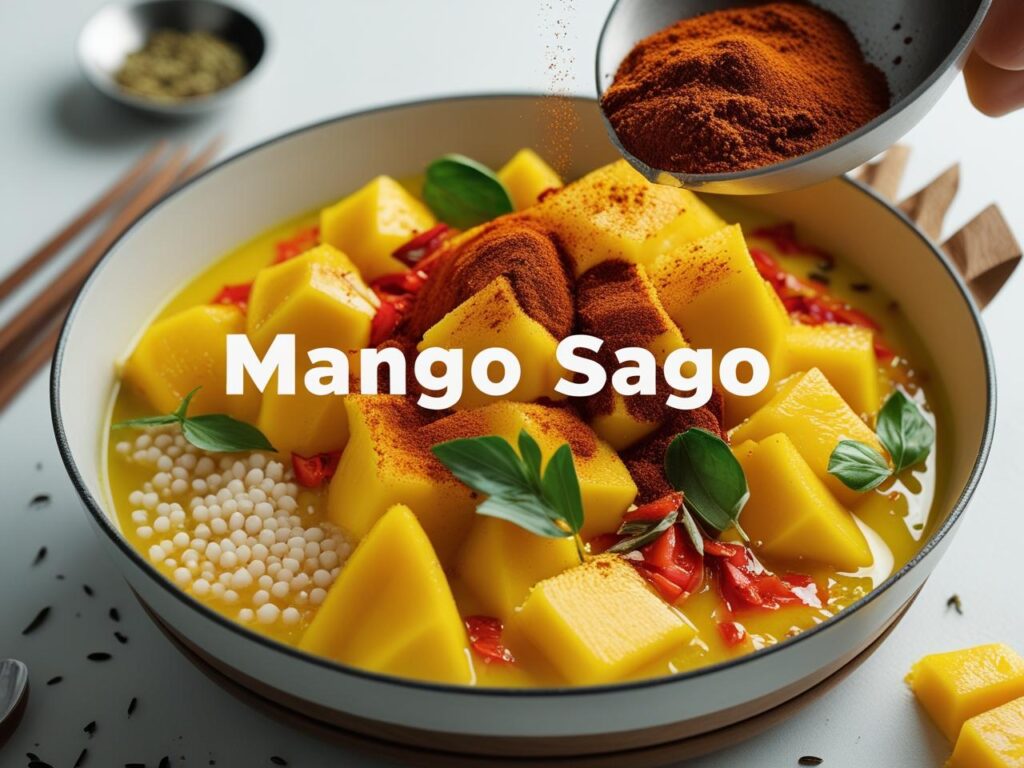Ever found yourself craving something sweet but not too heavy? Maybe you want a refreshing dessert that doesn’t require baking or hours in the kitchen. If that sounds familiar, Mango Sago might just become your new favorite.
In this post, we’ll explore how to make easy mango sago with coconut milk, why it’s perfect for summer, and even how to customize it to suit your health goals. Whether you’re looking for a quick fix or trying to impress guests at your next dinner party, this no-fuss dessert checks all the boxes.
What Is Mango Sago?
Mango Sago is a creamy, chilled dessert that originated in Hong Kong and is now loved all across Asia. It’s made with diced mangoes, tapioca pearls (sago), coconut milk, and sometimes condensed milk or cream for added richness. The texture is smooth and chewy, with just the right balance of sweetness and tropical flavor.
Why You’ll Love Mango Sago
- No baking required – Ideal for hot summer days
- Customizable – Make it dairy-free or sugar-free
- Tropical flavor explosion – Thanks to juicy mangoes
- Quick & easy prep – Under 30 minutes total
How to Make Mango Sago at Home (Step-by-Step Guide)
Ingredients You’ll Need:
- 2 ripe mangoes (Ataulfo or Honey mango preferred)
- ½ cup small tapioca pearls (sago)
- 1 cup coconut milk (chilled)
- ¼ cup condensed milk (optional, for extra sweetness)
- Ice cubes or crushed ice (optional for serving)
Instructions:
Step 1: Cook the Sago
Boil water in a pot and add the tapioca pearls. Stir occasionally to prevent clumping. Cook until the pearls turn translucent (about 10–15 minutes). Drain and rinse under cold water.
Step 2: Prepare the Mango
Peel and dice one mango. Blend the other mango with half of the coconut milk and optional condensed milk until smooth.
Step 3: Mix It All Together
In a bowl, combine cooked sago, mango puree, diced mangoes, and remaining coconut milk. Stir well and chill in the fridge for at least 30 minutes.
Step 4: Serve Cold
Serve in small bowls or glasses. You can top it with extra mango chunks or even mint leaves for presentation.

Comparison Table: Mango Sago Variations
| Variation | Key Ingredient | Dietary Benefit | Flavor Profile |
|---|---|---|---|
| Classic Mango Sago | Coconut Milk | Creamy & indulgent | Rich & fruity |
| Vegan Mango Sago | Almond/Cashew Milk | Dairy-free | Light & nutty |
| Healthy Mango Sago | Honey + Greek Yogurt | Protein-rich, low sugar | Tangy-sweet |
| Mango Sago with Chia Seeds | Chia Seeds | High in fiber & omega-3s | Chewy & textured |
| Mango Sago Pudding Popsicles | Frozen + Molded | Kid-friendly summer treat | Sweet & icy |
Real-Life Tip:
According to a 2024 survey by TasteAtlas, Mango Sago ranks in the top 10 trending Asian desserts in the U.S., especially during spring and summer. It’s gaining traction not only in Asian households but also among health-conscious foodies seeking no-bake desserts.
Expert Tip:
“Always chill the coconut milk before mixing—it enhances the creaminess and keeps the dessert refreshing,”
says Chef Lina Zhang, author of ‘Tropical Treats from the East’.
Benefits of Mango Sago for Summer
1. Cools You Down
Mangoes are hydrating, and the chilled coconut milk provides a refreshing base.
2. Light on the Stomach
Unlike heavy cakes or ice cream, Mango Sago is gentle and not overly filling.
3. Naturally Sweet
You can skip processed sugar by using ripe mangoes and a touch of honey.
4. Time-Saver
Prep time is under 30 minutes. Great for busy weekdays or surprise guests.
FAQs About Mango Sago
1. How long can Mango Sago be stored?
You can refrigerate it for up to 2 days in an airtight container. Stir before serving.
2. Can I make Mango Sago without coconut milk?
Yes! Swap it with almond, oat, or soy milk. The taste will be different but still delicious.
3. Is Mango Sago healthy?
Yes, especially if made with no added sugar and plant-based milk. It’s rich in vitamin C and fiber.
4. Can I freeze Mango Sago?
Freezing isn’t recommended—it changes the texture of the tapioca pearls. Instead, serve over ice.
5. Is this dessert gluten-free?
Absolutely. Tapioca pearls and mangoes are naturally gluten-free.
6. What kind of mangoes work best?
Ataulfo, Alphonso, or Honey mangoes are ideal due to their sweetness and low fiber.
7. Can I add other fruits?
Definitely. Try adding lychee, kiwi, or passionfruit for a fusion twist.
Final Thoughts
Mango Sago is more than just a dessert—it’s a tropical experience in every spoonful. Whether you’re cooling off on a hot day or treating guests to something exotic, this quick and easy dish delivers flavor, nutrition, and simplicity.
Give it a try, and let us know in the comments—did you add your own twist?
LSI Keywords (Naturally Included in the Article):
- Tapioca pudding with mango
- Coconut mango dessert
- Easy summer sweets
- No-bake Asian dessert
- Mango chia pudding
- Creamy fruit dessert
- Healthy tropical recipes
Let me know if you’d like this turned into a Pinterest pin, printable recipe card, or email newsletter format!Tools




Leave a Reply